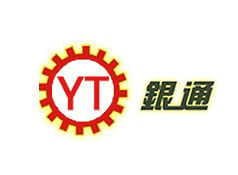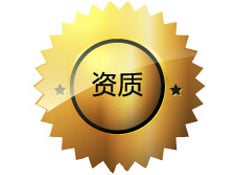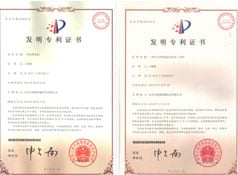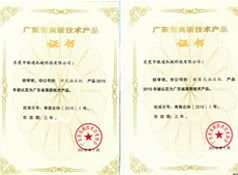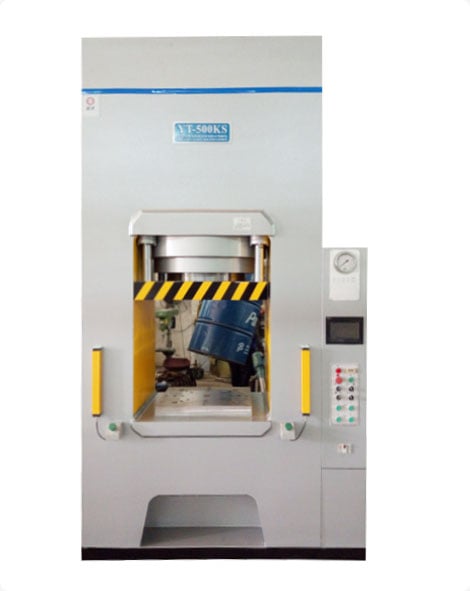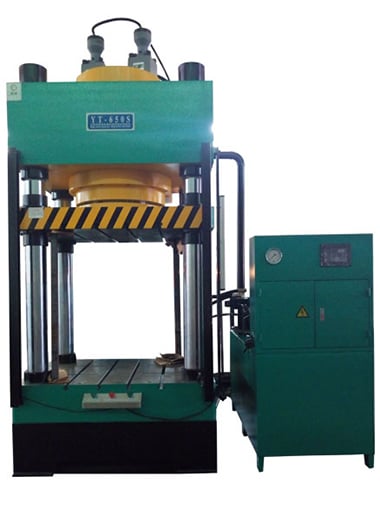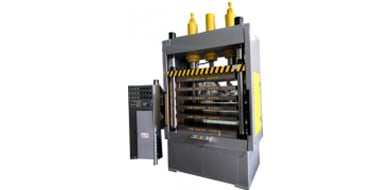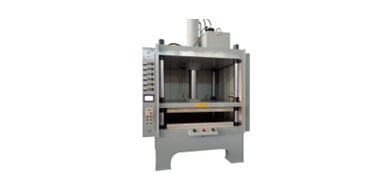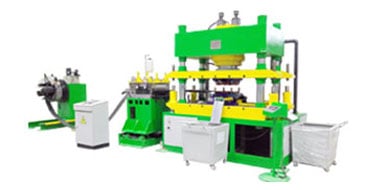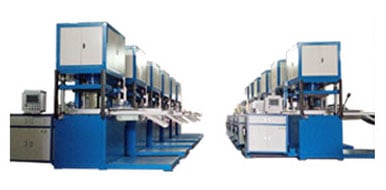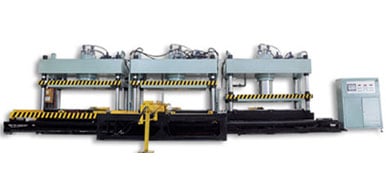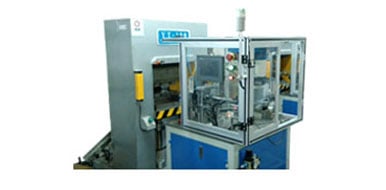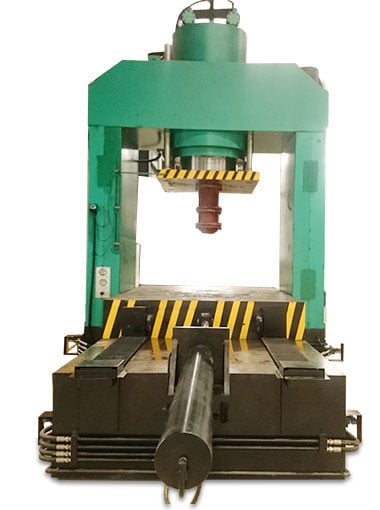How Much Force in Hydraulic Press
time:2023-11-26 views:(点击 924 次)Hydraulic presses are powerful machines designed for metal forming, providing high downward force that can flatten steel sheets, form metal into parts and even crush objects such as skulls.
Pressure is continuously transmitted into an enclosed static fluid to multiply force (hydraulic press principle). But how much force do you require for each task?
Cylinder Pressure
Hydraulic press machines employ a pump to pressurize oil, which then is transferred through its cylinders to its piston, where it exerts immense force upon something within the press. The type of force required depends on impact speed; optimal control ensures this matches up with how much kinetic energy the part requires.
To generate large amounts of force, hydraulic systems utilize Pascal's law - which states that changes in pressure at any point within an incompressible fluid are spread equally across its area - to generate enormous force. Press hydraulic cylinders are designed to amplify small input forces into much greater output forces - up to 20 times greater than what can be delivered from hand pressure alone.
Hydraulic cylinders, known as master and slave cylinders, can be connected in tandem to generate even greater forces. Their size is determined by their cross section: surface area divided by radius. Calculation can easily be accomplished by measuring piston diameter or more precisely bore (distance from center of cylinder to surface of piston) and dividing by 2. This number then represents piston radius which should then be multiplied by Pi (p). This process results in its affected area calculation.
Hydraulic systems allow piston acceleration up to a certain maximum speed before it stops transferring energy to the workpiece, minimizing chances of it breaking under press force. Acceleration cannot be zero as if the piston were to strike an object at zero velocity it would instantly destroy it.
Hydraulic cylinder working pressures are commonly measured using PSI (pounds per square inch). This indicates the maximum force that can be exerted when piston reaches maximum height; for instance, a 2,000 PSI cylinder could exert up to 25.5 tons.
Piston Diameter
Hydraulic presses use pistons connected by hydraulic lines to produce mechanical force using pressure from an incompressible fluid, such as water. The force generated can vary between manual presses (typically producing several tons) and motor driven presses generating thousands of tons. Hydraulic systems owe their success to the simple principle that any force applied to any body of liquid will be transmitted equally all directions - something manual presses cannot achieve. This powerful effect makes hydraulic systems essential tools.
Imagine a U-shaped tube filled with water and equipped with pistons at both ends, each being capable of transmitting pressure back along its path and out the opposite end. By applying force on one piston and applying similar pressure to another end of the U-shaped tube, Pascal's law ensures hydraulic systems can deliver powerful results.
Piston diameter is another key determinant in how much force can be exerted on a piston in a hydraulic press. When increasing, as does its diameter, so does the amount of force needed to move it - since this affects how many areas push on it directly.
Consider two pistons with diameters of one inch each: a small piston with 1 in diameter is pushed with a force of one pound while its opposite side receives the same pressure, leading the larger piston to decrease by one inch; but applying equal pressure from both directions causes its counterpart to rise 10 inches because their surface area ratios match each other perfectly.
Hydraulic systems multiply forces to lift extremely heavy weights with relative ease, similar to how jacks work; light pressure over long distances is used on one side to raise heavy loads on the other side, thus making hydraulic systems useful in various industrial settings.
Piston Radius
If you want to accurately gauge how much force a hydraulic press can exert, you need to first know its working pressure (measured in pounds per square inch, or psi). Furthermore, piston diameter and radius must also be known; piston radius can be calculated by dividing piston diameter by two and then squaring the result; piston area can then be determined by multiplying piston radius by the diameter of the cylinder; finally divide total force in pounds per square inch by total cylinder area in square inches or feet2 before arriving at its total force output in tons - in other words: to know its output capacity in terms of tons.
Hydraulic presses can exert enormous amounts of force, making them useful in various industrial processes such as metal forming. Hydraulics works on the principle of force multiplication; by adding an additional piston with smaller diameter than that of the pump piston in a hydraulic lift system, force multiplication occurs and mechanical advantage can be created with minimal input force.
Pascal's law, which states that any change in pressure at any point within an incompressible fluid will be equally transmitted in all directions, plays an essential role in explaining this phenomenon. For an illustration, consider filling a U-shaped tube with water and placing pistons at both ends; when pressing on either piston, any pressure created is transmitted to the right end via pressure being transmitted from left piston to right piston and vice versa.
Hydraulic systems work by applying equal pressure to both pistons, yet only one receives its maximum force at any given moment. When this pressure is transmitted to the larger piston due to its increased surface area, this results in greater force being generated than with its smaller counterpart. This is how hydraulic lifts multiply force.
Hydraulic lifts can produce tremendous force, so it's crucial that both materials and design of the machine can handle this force safely. Furthermore, its amplitude should be strictly limited so as to avoid damage to equipment and/or injuries to operators - this means they should only be used in areas where their operators can safely use it.
Area
Hydraulic presses provide massive amounts of force when needed. Used across industries for metalworking, molding and cold forming as well as punching shear and bending metal; their size determines the force generated.
Pascal's Law underpins a hydraulic press: when exerting any change in pressure upon any portion of a fluid, its effect is passed along unaltered to all other portions. This enables small mechanical forces to become much larger ones that help lift heavy loads on plungers.
As more force can be generated by larger pistons, it's essential that you understand the size of your pistons to properly size your hydraulic system and avoid failure. One simple way of calculating your piston area is through using a Piston Area Calculator; this tool helps determine how much force a piston exerts by entering various variables relating to force generation, as well as providing you with recommended sizes suited to your application.
Contact surface area plays an integral role in determining how much force a hydraulic press can exert, so it's essential to comprehend its geometry as well as what materials it deforms. By gathering this data, you can estimate how much pressure will be exerted at any given moment by this particular press.
Along with calculating piston area, it's also crucial to understand how a hydraulic system operates. This will enable you to accurately assess how much force can be applied by the machine and whether or not it is safe. A solid grasp of the science underlying hydraulic systems will enable you to troubleshoot issues and make necessary adjustments.
If you are using a hydraulic press and the fluid pressure is too low, adding more hydraulic hoses or increasing oil in the tank may increase it. Sometimes retuning is required after making changes to design or construction of the machine.
Link to this article: https://www.ihydraulicpress.com/nsn/5398.html
Hot Articles
-
How to Make Hydraulic Press Pocket Super-Viral Videos
If you own an extra laptop and wish to enjoy the popular Casual Game Hydraulic Press Pocket, there is an easy way! Simply follow this guide on how t……
-
How to Make a Bottle Cap Hydraulic Press
A bottle cap hydraulic press is a machine designed to close beer bottles using human force alone. It relies on Pascal’s Law which states that ……
-
How to Make Hydraulic Presses at Home
Have you seen hydraulic presses used to crush aluminium cans online? With some tools and an empty garage space, a homemade hydraulic press can be cr……
-
How Much Pressure Should a Hydraulic Press Have?
Hydraulic presses are machines capable of creating large amounts of force, making them useful tools in industrial settings, such as for forming meta……
-
How to Make a Small Electric Hydraulic Press
Hydraulic presses play an essential part in numerous manufacturing processes, from shaping machine parts to crushing waste and compacting it. Their ……
-
How to Make Rosin With a Hydraulic Press
No need for welding or mechanic skills when creating an in-home rosin press of high quality! All it takes is a hydraulic shop press, bottle jack o……
-
How to Make a Hydraulic Tincture Press
A tincture press is an invaluable tool for pressing herb materials used to make herbal medicines such as tinctures and glycerites, extracting more……
-
What Can I Make With a Hydraulic Press?
A hydraulic press relies on a hydraulic cylinder to generate massive amounts of pressure, making it possible for blacksmiths to create metal works……
Latest News
-
How to Make a Hydraulic Press Machine
For heavy duty metalwork projects, hydraulic presses can provide invaluable assistance. These machines utilize hydraulic jacks to generate enormous ……
-
How Much Does Hydraulic Press Channel Make?
Lauri Vuohensilta began posting videos to YouTube in 2015 featuring him crushing various objects with a hydraulic press, garnering millions of views……
-
How to Make a Hydraulic Press With Cardboard
Anyone who owns or works in a garage will appreciate the versatility of a hydraulic press. It can help compact bearings more closely together or con……
-
How to Make a Simple Hydraulic Press
Hydraulic presses are widely utilized tools that employ extreme amounts of pressure over an extended period or in quick succession, and are widely……
-
Hydraulic Press YouTube Channel
YouTube channel Lauri Vuohensilta hosts this channel about hydraulic presses to crush objects for his family-owned machining business, which has r……
-
How to Make Hydraulic Press Pocket Super-Viral Videos
Video production with hydraulic press pocket can be both thrilling and satisfying, but to avoid negative attention on YouTube it’s essential t……
-
How to Make a Hydraulic Press Model
If you require tons of pressure, a hydraulic press may be just what’s needed. Its moving component follows steel guides which ensure horizon……
-
How to Make a Hydraulic Press With Syringes
Hydraulic presses are integral parts of production and manufacturing processes. Their operation relies on Pascal’s law, which states that ap……
